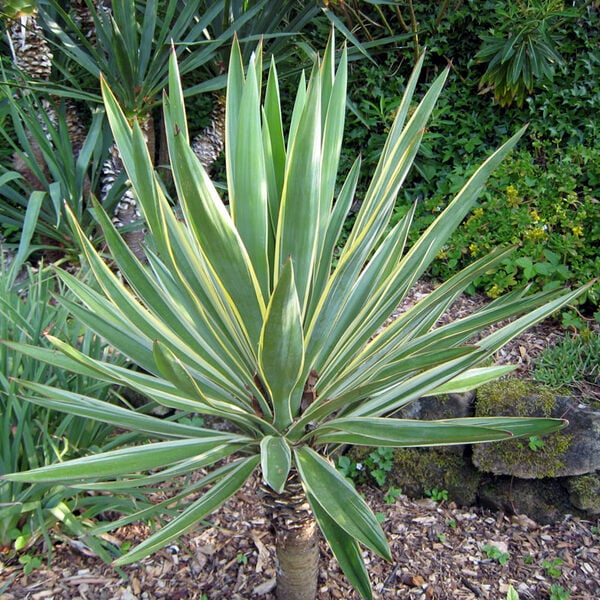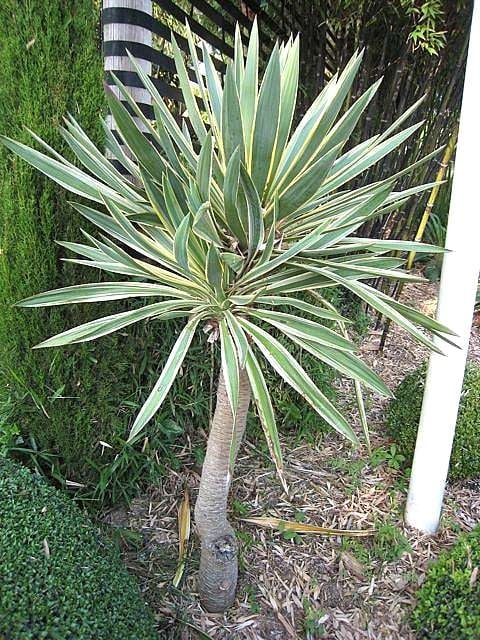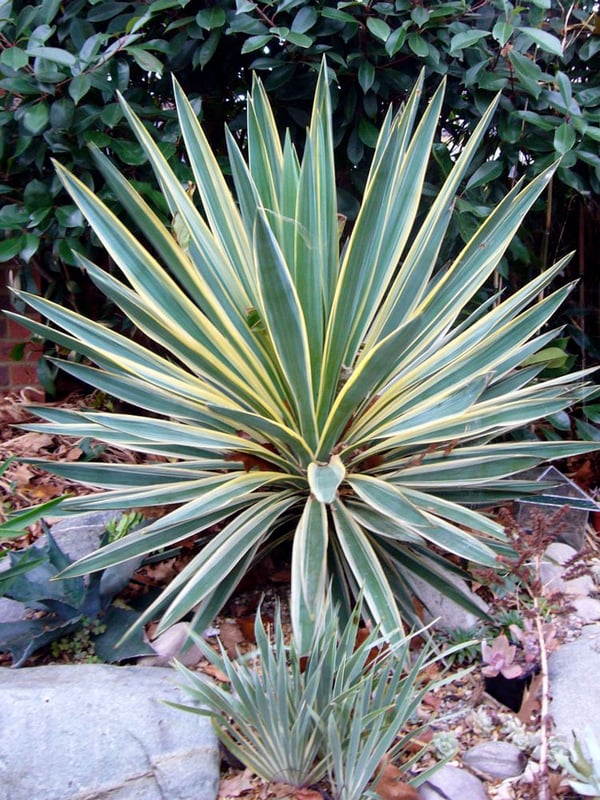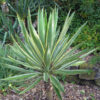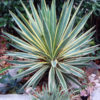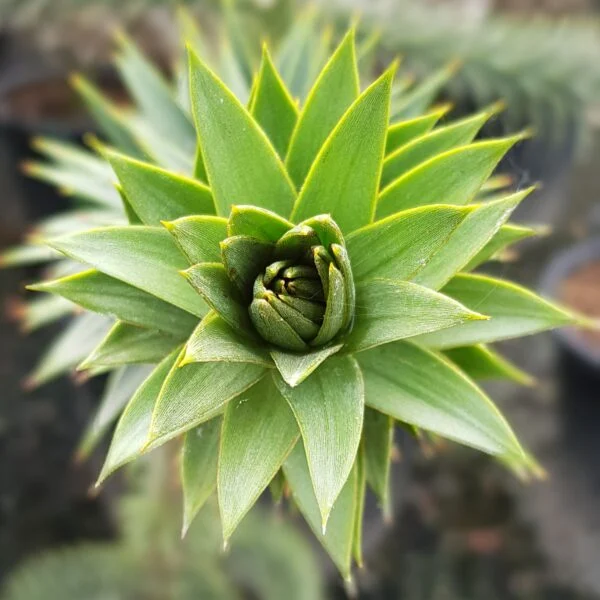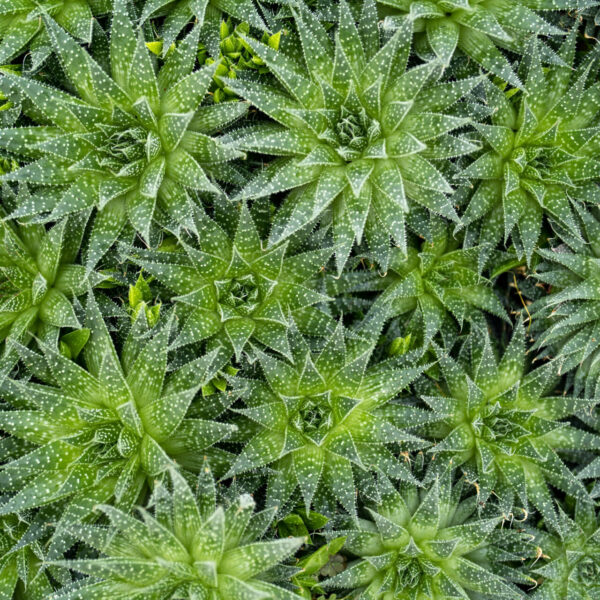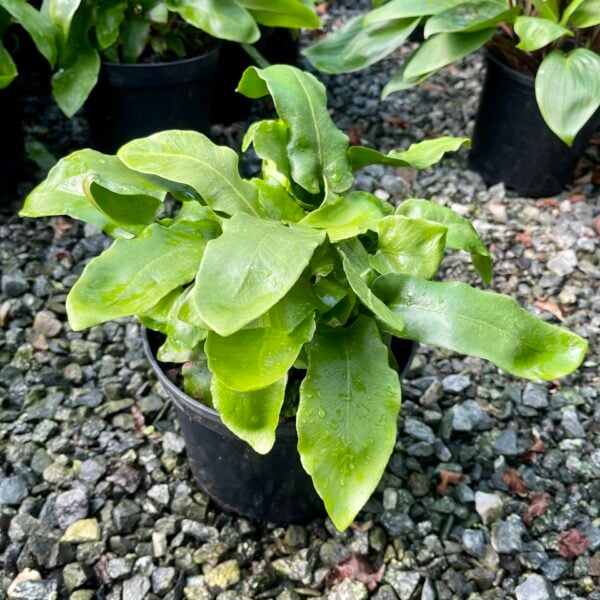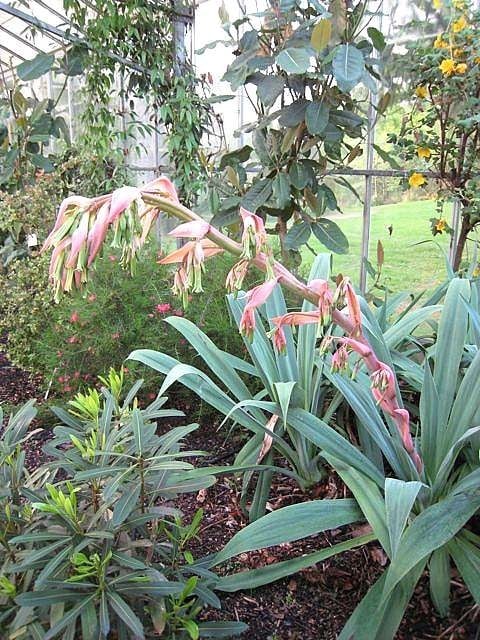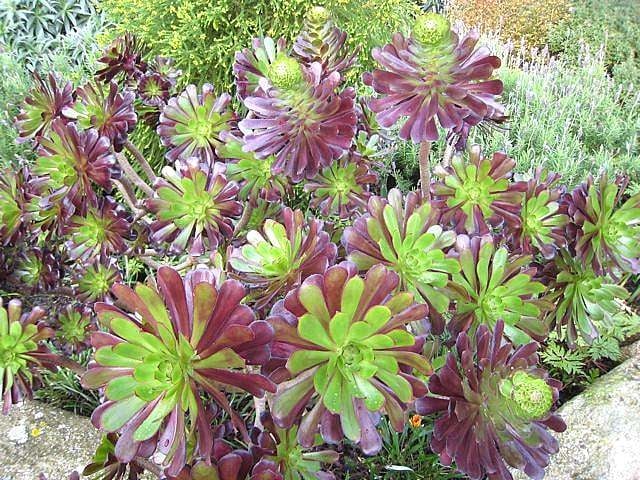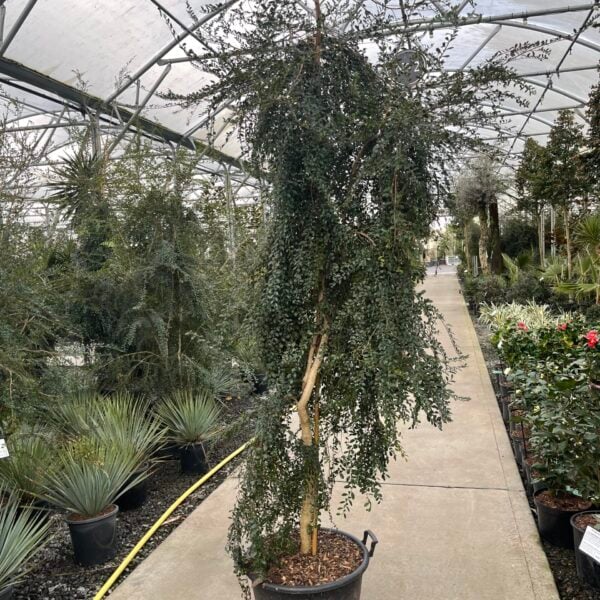Yucca gloriosa variegata (Adam's Needle)
As Yucca gloriosa but with yellow and green striped leaves. Very frost hardy but much less bulky. Could reach 4ft tall by 3ft across, less likely to form a ‘thicket’. Please contact us for other stock availability and sizes.

Hardiness level Green
The variegated version of the original yucca that was first introduced to Britain from the Carolinas in the U.S.A. Stiff leaves mean this is the most wind tolerant - but not quite as wind tolerant as the non-variegated form (Yucca gloriosa). Clear as mud? They flower so late in the year that sometimes the frost will get them before they open fully. The flowers come and go. The real reason for growing these is the wonderful form of the plant itself. They're long lived and will eventually grow stout trunks to 6ft or more but this could take many years. We propagate these in our lab by micropropagation as seed is unavailable and division is too slow.
Severe frost (-4°c or below) will give the leaves a glazed look. It can look terminal but it's not. They recover wonderfully well as soon as the temperature rises.
In common with all the yuccas we grow : remove old leaves (pull off or cut off, depending on your proclivities), use fungicide on them if they get spotty (this will stop the spot spreading - not make the spots go away), they have large white flower spikes in late summer, they branch after flowering, remove the flower spike as soon as the flowers fade. Any reasonably well drained soil - they're not desert plants and are not as fussy as people often imagine.
Some notes about spotty leaves : some plants (this is one) are susceptible to getting black spots on their leaves. This is the growth of fungal organisms that land on the leaf and grow. They do no harm to the plant but they look unsightly. This spottiness only seems to afflict a small number of plants that have spent the last few million years evolving in a dry climate where airborne fungal spores are rare and therefore the plants have never had a reason to develop a way to combat the situation. The technique to combat these spots is a combination of fungicide (any will do - particularly anything recommended for roses) used when the spots appear and merely removing (and burning preferably) affected leaves. Leaf removal removes the source of infection, fungicide kills the spores (but doesn't make the spots go away).
N.B. When clipping several plants with the same tool, have a bucket containing a 5% bleach solution and swish your blades around for 30 seconds between plants to sterilise them. This will help avoid the chance of cross contamination of disease.
As with all woody plants, plant high, exposing as much of the taper at the base of the trunk as possible. Allowing soil to accumulate round the base of a tree can be fatal. Keep very well watered when first planted.
The variegated version of the original yucca that was first introduced to Britain from the Carolinas in the U.S.A. Stiff leaves mean this is the most wind tolerant - but not quite as wind tolerant as the non-variegated form (Yucca gloriosa). Clear as mud? They flower so late in the year that sometimes the frost will get them before they open fully. The flowers come and go. The real reason for growing these is the wonderful form of the plant itself. They're long lived and will eventually grow stout trunks to 6ft or more but this could take many years. We propagate these in our lab by micropropagation as seed is unavailable and division is too slow.
Severe frost (-4°c or below) will give the leaves a glazed look. It can look terminal but it's not. They recover wonderfully well as soon as the temperature rises.
In common with all the yuccas we grow : remove old leaves (pull off or cut off, depending on your proclivities), use fungicide on them if they get spotty (this will stop the spot spreading - not make the spots go away), they have large white flower spikes in late summer, they branch after flowering, remove the flower spike as soon as the flowers fade. Any reasonably well drained soil - they're not desert plants and are not as fussy as people often imagine.
Some notes about spotty leaves : some plants (this is one) are susceptible to getting black spots on their leaves. This is the growth of fungal organisms that land on the leaf and grow. They do no harm to the plant but they look unsightly. This spottiness only seems to afflict a small number of plants that have spent the last few million years evolving in a dry climate where airborne fungal spores are rare and therefore the plants have never had a reason to develop a way to combat the situation. The technique to combat these spots is a combination of fungicide (any will do - particularly anything recommended for roses) used when the spots appear and merely removing (and burning preferably) affected leaves. Leaf removal removes the source of infection, fungicide kills the spores (but doesn't make the spots go away).
Additional Information |
|
|---|---|
| Soil Type | |
| Light | |
| Plant Type | Big Leaves / Exotics, Evergreen, Flowers, Grown by Us, Trees |
| Continent of Origin | |
| Specialist Plants | |
| Features | |
| Situation | Coastal, Conservatories, Exposed (To wind and sun), Mild City Gardens, Plants for Pots, Sheltered Garden |
| Flower Colour | |
| Hardiness | |





